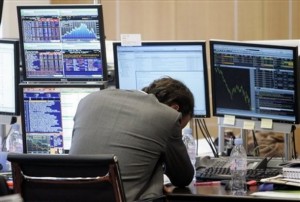The current economic crisis has a renewed interest in examining the situation that lead up to the Great Depression of the 1930s. Firms like Lehman Brothers and Bear Stearns were formulated in the 19th century or the earlier part of the 20th century and survived the shock of the Great Depression. It is viewed as the largest economic catastrophe in the history of our financial system. Yet, the 2008 global financial crisis and recession caused both of them to collapse.
We need to take a closer look at why they did fail in relationship to the structure of the company. The question that prevails is whether risk is better controlled under a partnership or a public corporation system?
Investopedia defines partnership as “a business organization in which two or more individuals manage and operate the business. Both owners are equally and personally liable for the debts from the business. Partnership doesn’t always mean two people. There are many large partnerships who have thousands of partners.” (LINK #1) A partnership structure where you are betting your own money is a better one at focusing on risk management. After researching various investment banks’ “business codes” or “risk management strategies”, I found Goldman Sachs to have the best business plan. (LINK #2) One of the reasons why Goldman has always been better at risk management and continued to do well throughout the 2008 meltdown is because as a partnership it really mattered to have good risk management. This is because it was the partners’ money that was at risk. Having your own money at risk is a very powerful motivator to make sure the risk and reward tradeoff is being made correctly. This view develops a culture in a company where the risk managers have equal power to the risk takers.
From what has happened, this didn’t exist in many other public companies. Even though Goldman changed into a publicly traded company, this culture of “it’s your money” stayed there to a fair extent. This is reflected by the fact that Goldman’s employees collectively still own a significant portion of the stock. (LINK #3) The same was true for Lehman Brothers and Bear Sterns employees. They also owned a significant portion of the company’s stock. No individual lost more money than Dick Fuld, CEO of Lehman Brothers. Reports say his total compensation from 2000-2007 totaled anywhere from $310 to $485 million, 85% of which was in the company’s stock. (LINK #4) Why was that economic incentive still not enough to make them be more careful? This has to do with the culture of the firms and the focus on making sure that there is a much better balance between risk takers and risk managers. Another thing Goldman does is it takes people who were traders and puts them on the risk management side. (LINK #5) Any company that takes the attitude that risk management is a low level function and the traders are the kings is setting themselves up for a problem. When you have good leadership at the top of your firm you will recognize the value of good risk management and their compensation will reflect that. An example that combines both culture and leadership is Warren Buffet. Warren Buffet has put everything that he owns into Berkshire Hathaway. It is clear that his attitude of “the risk for my shareholders is the same as the risk for me” reflects the overall success of the company. (LINK #6)
In closing I believe that it is the CEO’s job to protect the shareholders by investing in good risk management. The CEO’s who did not do this during 2008, for whatever reason, failed in their jobs.
Link #1-
http://www.investopedia.com/terms/p/partnership.asp
Link #2-
Link #3-
http://finance.yahoo.com/q/mh?s=GS+Major+Holders
Link #4-
http://www.businessweek.com/magazine/content/10_19/b4177056214833.htm
Link #5-
http://www.goldmansachs.com/careers/why-goldman-sachs/our-people/sarah-man-profile.html
Link #6-
